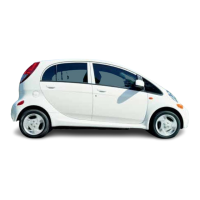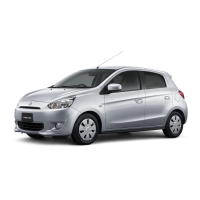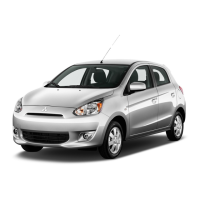Chapter 1 Tune-up and routine maintenance
Tune-up’information (continued)
Ignition timing*
2.OL and 2.4L four-cylinder engines . . . . . . . . . . . . . . . . . . . . . . 3-degrees to 7degrees BTDC
2.6L four-cylinder engin
1989andearlier . . . . . . . . . . . . . . . . ..___._.._.._...____ 3-degrees to 7-degrees BTDC
1990andlater . . . . .._......____...__....__..___..._
B-degrees to IO-degrees BTDC
3.OLV6engine . . . . . . . .._............_............_.. 3-degrees to 7-degrees BTDC
*Refer to the Vehicle Emission Control information label in the engine compartment: use the informAtion there if if differs from that listed here
Valve clearances (engine at normal operating temperature) - models through 1992 only
Note: No 1993 and later models require valve adjustment
Intakevalves .____..-...--.---.................-....- 0.006 inch
Exhaustvalves . . . . . . . . . . . . . . . . . . . . . . .._..........___ O..OlO inch
Jet valve
1983andearlier . . . . . . . . . .._........._____.........._ 0.006 inch
1984throughl992 . . .._........_..................... 0.010 inch
Note: When assembling valve train components after they’ve been removed, use the following coldclearance settings forinitialstart-up, then ac@st the
valves again after the engine warms up to normal operating temperature
Intake valves (engine cold) ........................
_
.....
Exhaust and Jet valves (engine cold) .....................
Clutch
Pedal freeplahy
Cable-operated clutch ..............................
_
..
Hydraulic clutch ..............................
_
.......
Pedal heigh
2.4L four-cylinder and all V6 engines ........
_
......
_
.....
2.6L four-cylinder engine .......................
_
.......
Cable freepfay (measured at firewall) .......................
Brake
Parking brake adjustment
Umbrella-type handle ..................................
Lever-typehandle
.............................. .._ ...
Pedal height
Trucks.. ..I.~ ......................................
Monteros.. .........................................
Pedal freeplay
1986andearfier .......................... .._.__ ......
1987and later ........................... ._. . _. .. __ _._
Brake shoe lining wear limit ..............................
Brake pad lining wear limit ...............................
Torque specifications
Sparkplugs ...........................................
Engineoildrainplug ....................................
Valvecoverbolts .......................................
Manual transmission check/fill and drain plugs ............. _ ..
Differential check/fill and.drain plugs ............... _
_
.. _ ...
Transfer case check/fill and drain plugs ........... _ ...... I ..
Oxygensensor _..._........._ .........................
Wheellugnuts ........................................
1 Introduction
This Chapter is designed to help the home mechanic maintain the Mit-
subishi mini-pickups and Montero with the goals of maximum perform-
ance, economy, safety and reliability in mind.
Included is a master maintenance schedule (page l-7), followed by
procedures dealing specifically with every item on the schedule. Visual
checks, adjustments, component replacementand other helpful items are
included. Refer to the accampanying illustrations of the engine compatt-
ment and the underside of the vehicle for the locations of various compo-
nents.
Servicing your vehicle in accordance with the planned mileage/time
maintenance schedule and the step-by-step procedures should result in
maximum reliability and extend the life of your vehicle. Keep in mind that
it’s a comprehensive plan - maintaining some items but not others at the
specified intervals will not produce the same results.
‘0.004 inch
0.007 inch
3l4 inch
518 inch
6 l/2 inches
7 inches
15/64 inch
16 to 17 clicks
4 to 6 clicks
6 l/2 to 7 inches
7 l/2 to 7 314 inches
13/32 to 9/l 6 inch
l/8 to 5/l 6 inch
3164 inch
3/32 inch
Ft-lbs (unless otherwise indicated)
10
96 to 120 in-lbs
96 to 120 in-lbs
22 to 35
29 to 43
14to29
30 to 37
80 to 95
As you perform routine maintenance procedures, you’ll find that many
can, and should, be grouped together because of the nature of the proce-
dures or because of the proximity of two otherwise unrelated components
or systems.
For example, if the vehicle is raised for chassis lubrication, you should
inspect the exhaust, suspension, steering and fuel systems while you’re
under the vehicle. When you’re rotating the tires, it makes good sense to
check the brakes sincethe wheels are already removed. Finally, let’s sup-
pose you have to borrow or rent a torque wrench. Even if you only need
it to tighten the spark plugs, you might as well check the torque of as many
critical fasteners as time allows.
Thefirststep in this maintenance program is to prepare yourself before
the actual work begins. Read through all the procedures you’re planning
to do, then gather up all the parts and tools needed. If it looks like you might
run into problems during a particular job, seek advice from a mechanic or
experienced do-it-yourselfer.

